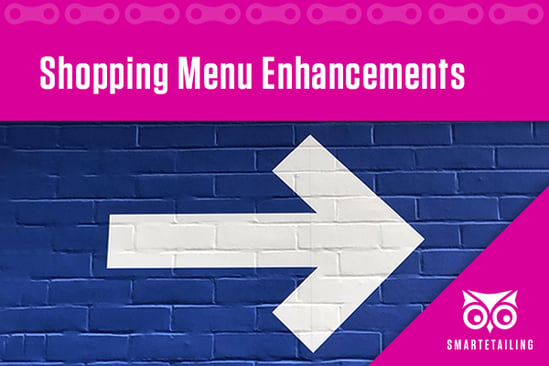
With 85% of all purchases beginning with online engagement - bike shops are incentivized to have a well-merchandised and easy-to-shop website.
Because every local bike shop has unique perspectives on how to merchandise products, SmartEtailing has made our industry-leading catalog even better.
We’ve enhanced our shopping menu to allow retailers more flexibility when building catalog navigation.
You can now choose to segment some categories from your main shopping menu and into their own place in your website navigation. With the latest enhancement to the catalog link pages that are used to create mega menus, it’s much easier.
Ecommerce trends continue to evolve and we’re committed to continuously improving our services to keep up. Whether or not you decide to modify your shopping menu, here are some tips for setting up your catalog navigation with a customer-focused mindset.
Position your most important categories on the left
The top left corner of your website gets visitors’ attention first. We encourage you to consider organizing your navigation left to right in order of importance.
When looking specifically at shopping categories in your navigation, we recommend leading with bikes on the left followed by categories like accessories, parts, or apparel.
If you’d prefer to keep your catalog within a single mega menu, place it first or farthest left in the navigation.
With half of all traffic coming from mobile devices, organizing your navigation left to right will get categories or services with the most value in front of viewers on their phones first. Items on the left will be placed at the top of your navigation on mobile.
More may not be better
We understand you have many important shopping categories but we recommend limiting the options in your navigation to what can deliver the most value to your customers.
This is particularly relevant when you consider that over half of shoppers use site search instead of navigation - so adding too much complexity to your navigation not only makes shopping potentially more challenging for website visitors, but also has diminishing returns even if your work is perfect.
Take a moment to consider how your customers shop when they come into your store to inform which categories to include in your navigation. Shoppers are typically looking for a bike, accessories for their bike, or gear for their body - these are great places to start.
Don’t forget to leave room for menus in your navigation that promote your services and culture. You being a local business is a key part of what distinguishes you from pure online sellers.
Keeping the categories high level will allow your shoppers to quickly scan and find the category they’re looking for. Too many options can also cause decision fatigue, leading to visitors leaving your website before browsing your catalog or making a purchase.
If you’d like to get more granular in order to feature sub-categories like lights or helmets, that is best done in a merchandised section on your homepage or featured in the hero you maintain monthly or seasonally.
Keep accessibility top of mind
Make sure you maintain readability for everyone and that your navigation displays wells on all screens sizes. By not overloading your navigation with too many choices, you are able to keep ample space between items making them easier to read and distinguishable from each other. This will also keep your navigation in a single row on desktops.
Want to update your shopping menu with our new tools?
We’re here to provide you with tools and support to help you be as successful as possible. Visit our help center or reach out to our Client Success team for personalized support.

Comments